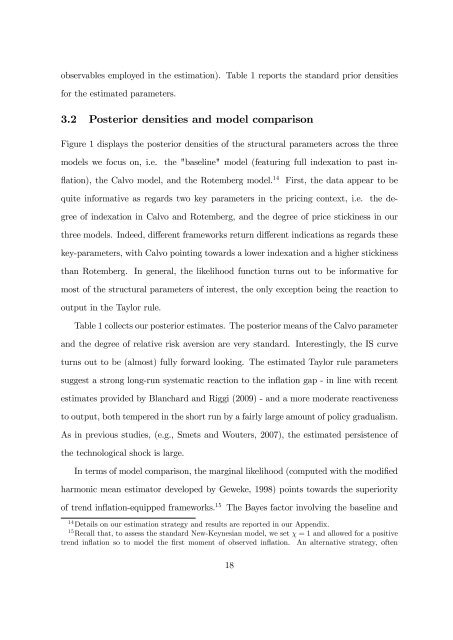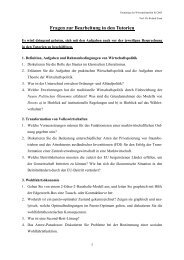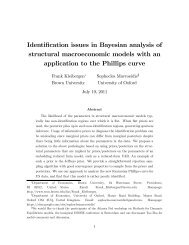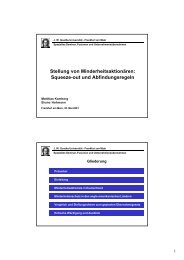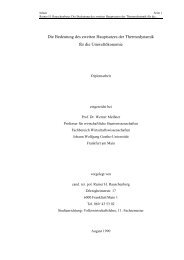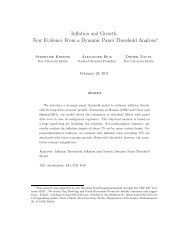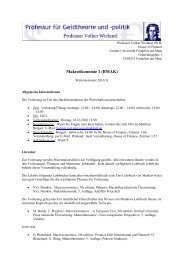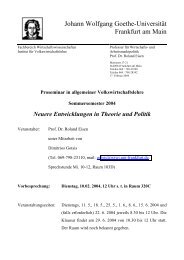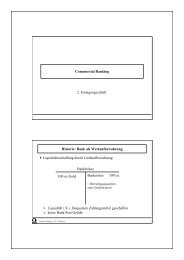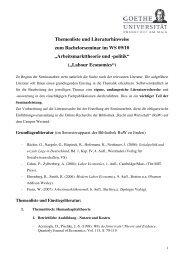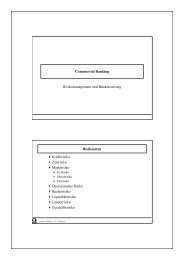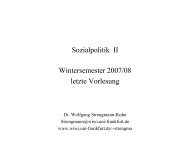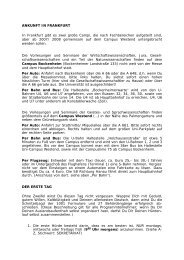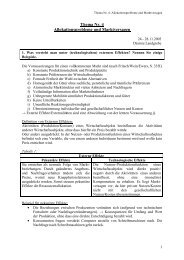Calvo vs. Rotemberg in a Trend Inflation World - Wiwi Uni-Frankfurt
Calvo vs. Rotemberg in a Trend Inflation World - Wiwi Uni-Frankfurt
Calvo vs. Rotemberg in a Trend Inflation World - Wiwi Uni-Frankfurt
Create successful ePaper yourself
Turn your PDF publications into a flip-book with our unique Google optimized e-Paper software.
observables employed <strong>in</strong> the estimation). Table 1 reports the standard prior densities<br />
for the estimated parameters.<br />
3.2 Posterior densities and model comparison<br />
Figure 1 displays the posterior densities of the structural parameters across the three<br />
models we focus on, i.e. the "basel<strong>in</strong>e" model (featur<strong>in</strong>g full <strong>in</strong>dexation to past <strong>in</strong>-<br />
‡ation), the <strong>Calvo</strong> model, and the <strong>Rotemberg</strong> model. 14 First, the data appear to be<br />
quite <strong>in</strong>formative as regards two key parameters <strong>in</strong> the pric<strong>in</strong>g context, i.e. the de-<br />
gree of <strong>in</strong>dexation <strong>in</strong> <strong>Calvo</strong> and <strong>Rotemberg</strong>, and the degree of price stick<strong>in</strong>ess <strong>in</strong> our<br />
three models. Indeed, di¤erent frameworks return di¤erent <strong>in</strong>dications as regards these<br />
key-parameters, with <strong>Calvo</strong> po<strong>in</strong>t<strong>in</strong>g towards a lower <strong>in</strong>dexation and a higher stick<strong>in</strong>ess<br />
than <strong>Rotemberg</strong>. In general, the likelihood function turns out to be <strong>in</strong>formative for<br />
most of the structural parameters of <strong>in</strong>terest, the only exception be<strong>in</strong>g the reaction to<br />
output <strong>in</strong> the Taylor rule.<br />
Table 1 collects our posterior estimates. The posterior means of the <strong>Calvo</strong> parameter<br />
and the degree of relative risk aversion are very standard. Interest<strong>in</strong>gly, the IS curve<br />
turns out to be (almost) fully forward look<strong>in</strong>g. The estimated Taylor rule parameters<br />
suggest a strong long-run systematic reaction to the <strong>in</strong>‡ation gap - <strong>in</strong> l<strong>in</strong>e with recent<br />
estimates provided by Blanchard and Riggi (2009) - and a more moderate reactiveness<br />
to output, both tempered <strong>in</strong> the short run by a fairly large amount of policy gradualism.<br />
As <strong>in</strong> previous studies, (e.g., Smets and Wouters, 2007), the estimated persistence of<br />
the technological shock is large.<br />
In terms of model comparison, the marg<strong>in</strong>al likelihood (computed with the modi…ed<br />
harmonic mean estimator developed by Geweke, 1998) po<strong>in</strong>ts towards the superiority<br />
of trend <strong>in</strong>‡ation-equipped frameworks. 15 The Bayes factor <strong>in</strong>volv<strong>in</strong>g the basel<strong>in</strong>e and<br />
14 Details on our estimation strategy and results are reported <strong>in</strong> our Appendix.<br />
15 Recall that, to assess the standard New-Keynesian model, we set = 1 and allowed for a positive<br />
trend <strong>in</strong>‡ation so to model the …rst moment of observed <strong>in</strong>‡ation. An alternative strategy, often<br />
18


